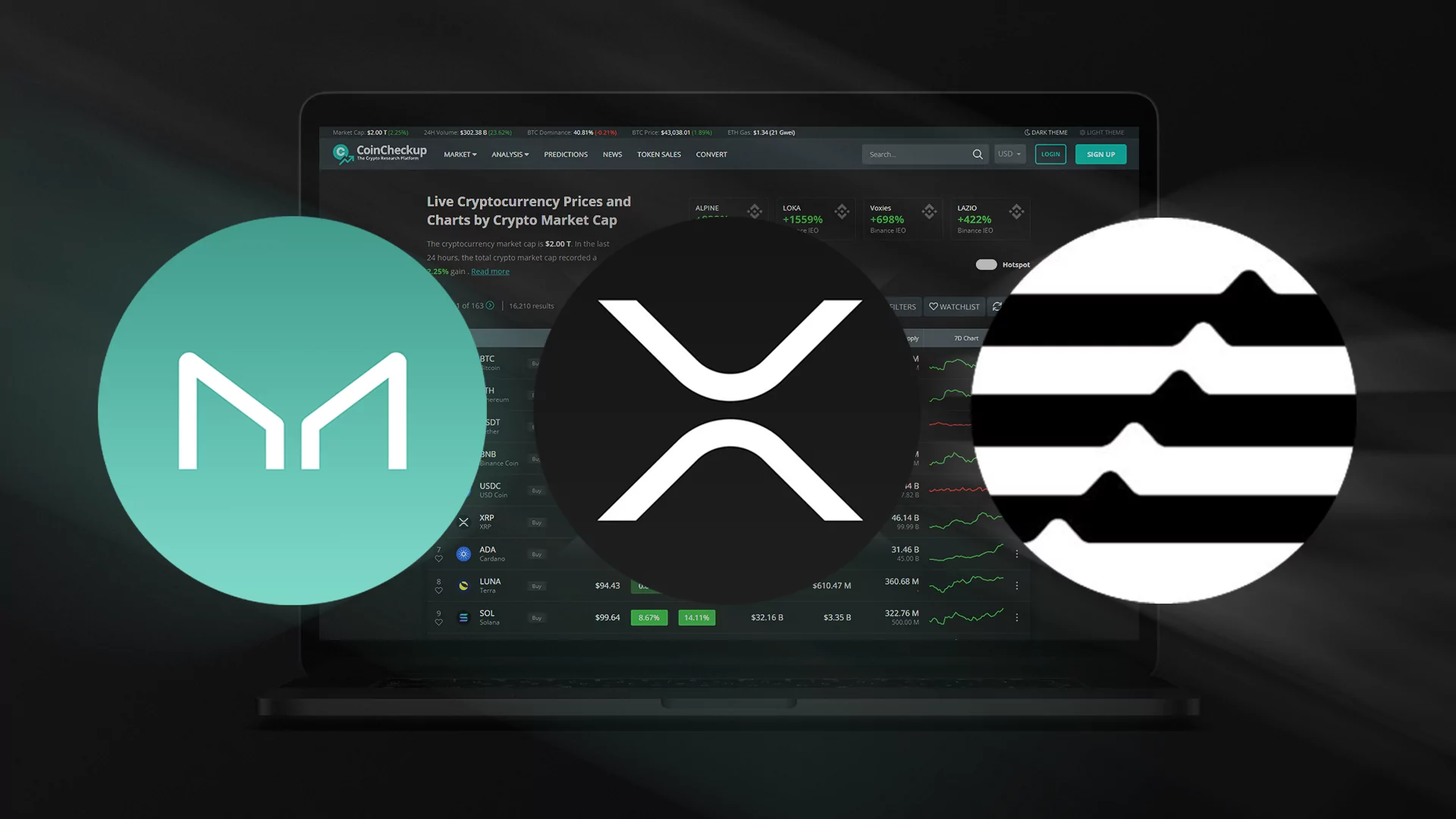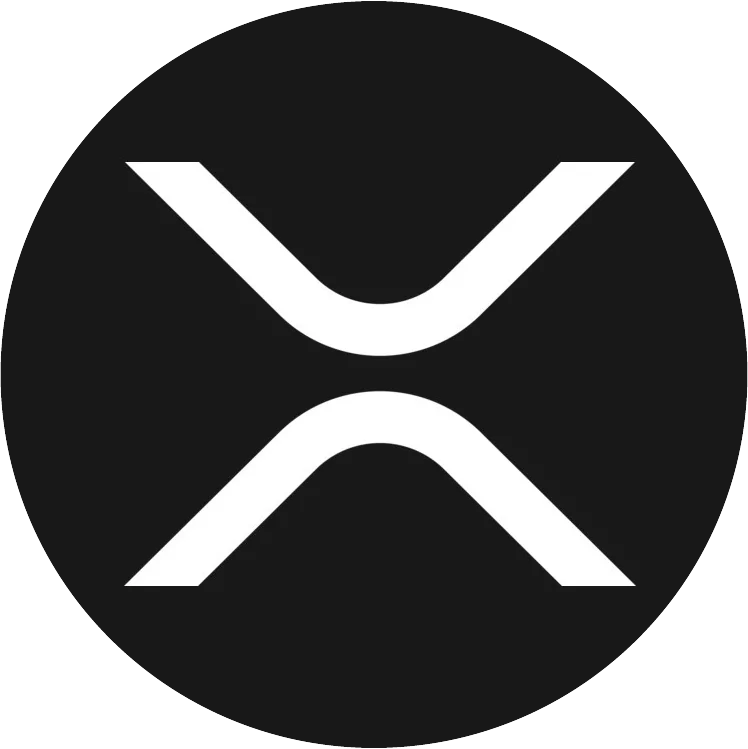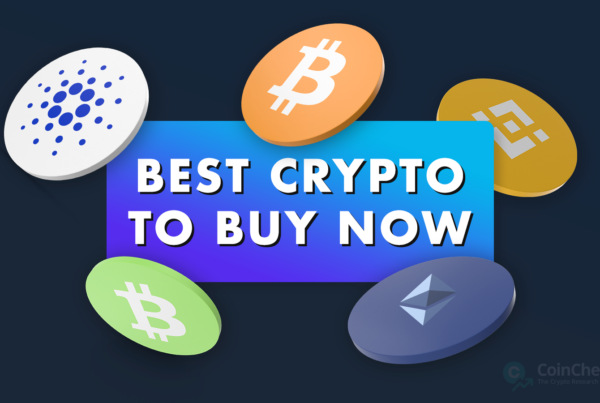
The cryptocurrency market entered Week 43 with a total market capitalization of $945 billion. While the total market capitalization remained almost unchanged as compared to the total capitalization at the start of last week, both largest cryptos ended the week in the green with BTC gaining 1.5% and ETH twice as much. Klaytn (KLAY) and Huobi Token (HT), our #1 Top Coin to Watch from last week’s article, were the best performing assets out of crypto Top 100, with a 34% and a 21% gain respectively. Can this week’s #1-coin repeat Huobi Token’s success?

3. Maker (MKR)
Maker protocol was one of the earliest projects on Ethereum and remains the cornerstone of Ethereum’s decentralized finance (DeFi) ecosystem. This protocol, which launched already in 2015, allows users to lock up their Ethereum or other Ethereum-based assets as collateral to receive a loan in the form of Dai stablecoin. Dai, which is designed to trade as close to $1 as possible, is issued in a completely trustless manner. Its issuance and peg are governed by a complex system of Ethereum smart contracts. MKR is Maker Protocol’s governance token. Holders of these ERC-20 tokens can propose changes to the protocol and participate in governance polls.
Maker Protocol is undergoing a “makeover” as MKR governance community votes on a series of proposals that will shape the company’s future
Maker gained roughly 45% in the past 30 days, which maker MKR the third most profitable assets in the cryptocurrency top 100 in this time frame. The rally is somehow in accordance with Maker’s historical price trends, as MKR usually goes against the rest of the market, performing well when the rest of the crypto market is in decline and vice versa. From the technical perspective, we notice that the total number of wallets interacting with Maker is in decline, but the number of wallets with non-zero balances and active wallets is gradually growing. Nevertheless, both metrics are far away from their highs reached in spring 2021, which leads us to the assumption that the positive market sentiment could be connected with the “makeover” that the Maker protocol is currently undergoing. The MakerDAO founder Rune Christensen describe his opinion on how to make the popular DeFi protocol even more decentralized and censorship resistant in his “Endgame” manifesto. Nevertheless, some Maker investors including venture capitalist Andreessen Horowitz (a16z) who holds on to a large amount of MKR are not on board with the founder’s plan to break up MakerDAO into smaller units. In its root the disagreement is actually because one camp favours prioritizing decentralization while the other puts boosting growth first. The fact that lots of decisive governance votes are expected may also contribute to the increased demand for MKR and drive its price up. In other news, the MakerDAO, has recently decided to diversify its balance sheet. Considering the rising interest rates, the DAO voted to convert $500 million worth of DAI stablecoin into short-term US Treasuries (80%) and investment-grade corporate bonds (20%).

2. XRP (XRP)
XRP is a cryptocurrency that was launched in 2012 by Chris Larsen, Jed McCaleb and Arthur Britto. Ripple’s network uses a unique Ripple Protocol consensus algorithm (RPCA), which is neither proof-of-work nor proof-of-stake, to facilitate fast and cheap transactions. The maximum supply of XRP is 100 billion coins and all the coins were minted at launch of the Ripple blockchain. Back than 80% of the total XRP supply was given to fintech firm Opencoin, a company that renamed to Ripple Labs in 2015. As of today, Ripple Labs still hold more than half of the total XRP supply. However, most of the company’s XRP holdings are locked in escrow. In December 2020 Ripple became entangled in a lawsuit with the US SEC, which accuses that the company of selling unregistered securities. The legal battle between Ripple and the SEC remains one of the key factors influencing XRP’s price.
Several technical and fundamental factors indicate a potentially bullish rest of the year for XRP
During the last few months, the lawsuit related developments have caused several XRP rallies, causing it to record an almost 35% gain during the past 3 months. Nevertheless, there are currently several factors that point out to a bullish rest of the year for XRP on top of the possibility of a positive outcome of the legal battle with the SEC. For example, Ripple is seeking to bring Ethereum smart contracts to the XRP ledger. This will be done through an EVM-compatible XRP sidechain, which has already been launched on devnet. The sidechain that is set to undergo the second phase of development in early 2023 will allow XRP users to interact with Ethereum-compatible decentralized applications (Dapps). As noted by RippleX software engineer Mayukha Vadari, developers will “no longer have to choose between XRPL or EVM-compatible blockchains” and could have both: the Ethereum-grade Solidity smart contracts and Ripple’s fast low-cost transactions. Ripple is also currently handing out Creator Fund’s grants – $250M have been allocated to help creators bring their NFT projects to market on the XRP Ledger as part of this program. Furthermore, technical analysis also suggests a possible bullish outbreak. No wonder, that the on-chain data is showing strong XRP accumulation in this setting – data provided by Santiment shows rising XRP mean coin age and massice XRP outflows from exchanges to private wallets. Do you think we will see XRP at $1 this year?

1. Aptos (APT)
Aptos is a new highly scalable Layer 1 network brought to life by a team of former Diem stablecoin (previously known as Libra project) developers. However, team members are not the only thing that Aptos has in common with Diem, as the new blockchain utilizes Move, a programming language that was initially developed for Meta’s Diem project. Using the low latency Byzantine Fault Tolerant (BFT) engine allows Aptos to reach consensus extremely quickly – we are talking about sub-second block finality. Combined with high scalability the team believes that Aptos is the most product-ready blockchain in the world, which is capable of facilitating the industry’s move to Web3. The Aptos project has raised $350 million in funding in early 2022 from a number of prominent investors, including Andreessen Horowitz and FTX Ventures.
Aptos Launched its Mainnet on October 17, its APT coin soon got listed on some of the most popular exchanges
After several months in development, the Aptos mainnet went live at the beginning of last week (October 17). The mainnet launch generated a lot of buzz in the crypto sector as members of the cryptocurrency community had high expectations for the project.
While the Aptos team claims that everything connected with the launch went smooth, several social media users noted that the network’s performance is verry poor. They have noticed that the blockchain is only processing 4 transactions per second (TPS) as opposed to the promised 160,000 TPS. However, the extremely low TPS was very likely just due to the low traffic and activity on this emerging blockchain in the first hours of its existence. In fact, Aptos has recently performed up to a maximum of 2,500 TPS. Nevertheless, only time will show how many transactions Aptos can handle, with the announced deployment of several NFT project on Aptos being the very first significant stress test. In addition, the Aptos network’s native governance and utility token APT was listed on most popular exchanges just two days after the launch of the mainnet. Binance, Coinbase, and FTX exchanges have participated in a synchronised listing, the APT order books on these exchanges opened on October 19, 1:00 UTC. Soon after that, Huobi, OKX, KuCoin and Bitfinex have also listed APT, so that the coin is now trading on almost every large centralized exchange. Decentralized exchanges, on the other hand, are considering deployment on the freshly deployed PoS blockchain. The PancakeSwap team was among the first to recognise Aptos’ potential and propose the deployment of their DEX protocol on the Aptos chain. The proposal was passed with more than 98% votes in favour of deployment. To conclude, Aptos is a small and young project that has an enormous potential to grow. Aptos’ experienced team, rapidly growing network activity and an already vibrant developer ecosystem give the project a higher chance to succeed.



